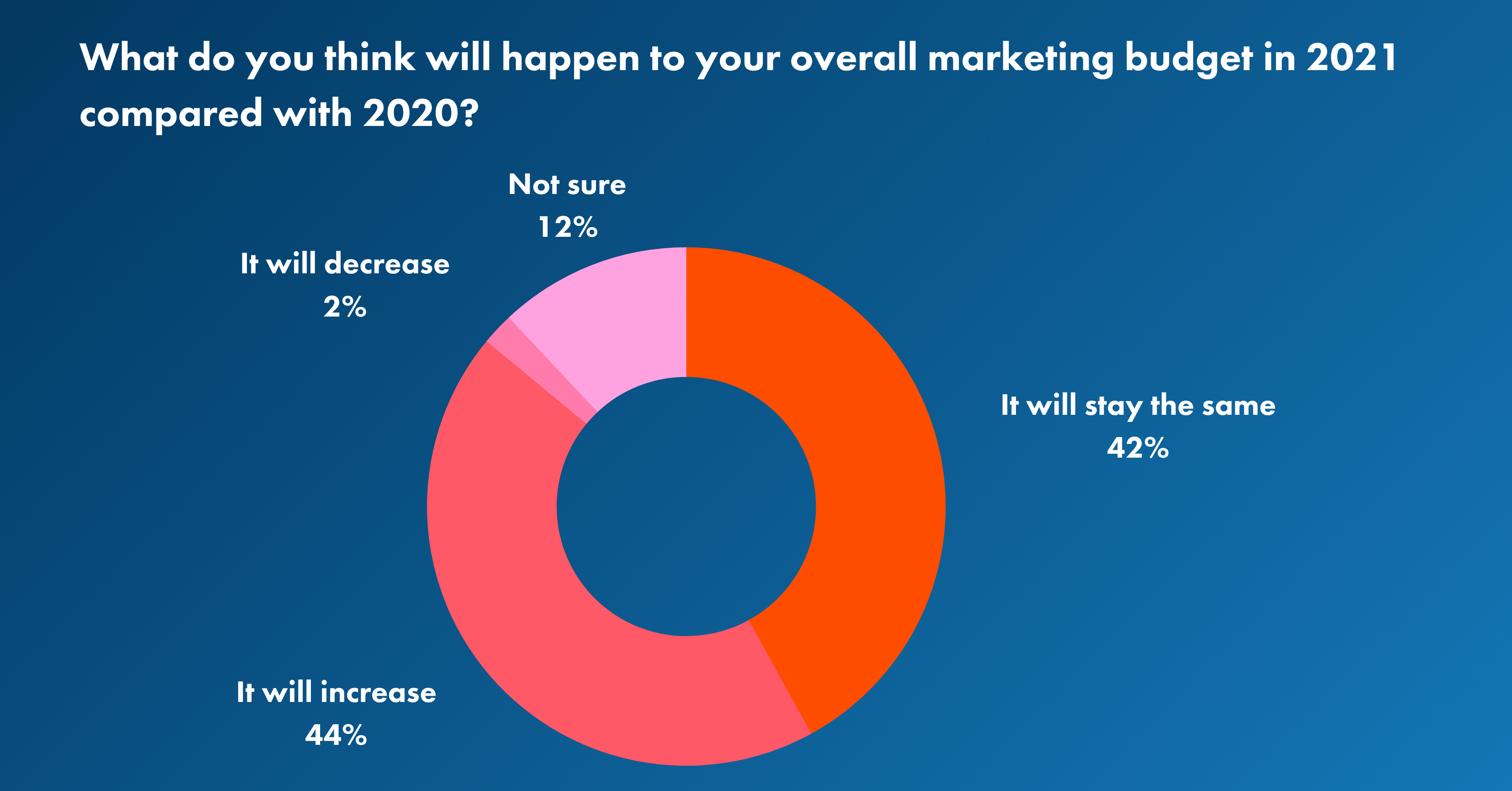4 common industrial marketing challenges (and their solutions)
The recently released second edition of The Marketing In Manufacturing Report revealed a number of challenges for the manufacturing sector. Creating enough high-quality content, measuring success and a lack of strategy have all reappeared as major challenges for industrial marketers. In this article we’ll talk more about those challenges – and provide some free marketing resources to help you overcome these pain points.

Challenge 1: Creating Enough High-Quality Content
Some 49% of manufacturing businesses cite ‘creating enough high-quality content’ as one of their most significant marketing challenges. This is all too common as marketing teams struggle to remain competitive in search engines while answering common questions from prospects. This is particularly true for those manufacturing businesses with small or one-person marketing teams servicing an entire organisation; 60% of manufacturers are in this group.
The truth is, content is king. If manufacturers want to compete and dominate in search engines, they need to find a way of creating engaging, high-quality content for their prospects and customers. Without doing so, manufacturers will face the harsh reality of being invisible to potential prospects.
The stats speak for themselves. According to Ignite Visibility, those with first positions in search engines enjoy an average clickthrough rate of 43% compared with just 3% for those in position 10!
How can manufacturers overcome this challenge?
- Commit to a content plan. Without a content plan, you’ll end up creating sporadic, unfocused content that will not only be painful to create – it’ll also have minimal effect on search engine results. Creating a content plan means saving time and generating better results with more focused, well-researched content.
- Repurpose content. This is the oldest trick in the book but it is completely under-utilised. Review your existing content and identify opportunities to repurpose and revitalise existing content. You might turn a blog post into a video, or a news article into an infographic. Doing this will allow you to make the most of your time and get every last bit of value from every piece of content you create. This very blog post is an adaptation of our Industrial Marketing Challenges and Solutions workshop!
- Outsource your content creation. We know what it’s like to be a marketer! You have lots of plates to keep spinning and it can be tempting to try and keep them all spinning yourself. Sometimes, it’s better to outsource content creation to a trusted industry expert to ensure it gets done. According to the Content Marketing Institute (CMI), 61% of manufacturers outsource at least one content marketing activity – most likely content creation. You’ll have the benefit of industry experts creating high-quality content while you can focus on other, more pressing tasks.
Challenge 2: A Lack Of Strategy
We’ve worked with manufacturing businesses for over 20 years and more often than not, we discover that their lack of strategy is the source of many of their marketing challenges. It causes:
- a lack of focus
- an inability to meet goals
- difficulty in measuring success
- difficulty in generating leads.
Without a solid business and marketing strategy, manufacturers do not focus on who they’re targeting, what their challenges are, how to measure success, or even which content to create.
How can manufacturers overcome this challenge?
This previous blog post provides a guide to creating a marketing strategy for manufacturing businesses. In terms of structure, we recommend the following for any manufacturing marketing strategy:
- Current situation. This should be an outline of where you are as a business and the status of your marketing.
- Business objectives. Outline exactly what you want to achieve as a business and with your marketing. Remember, these objectives need to be SMART!
- Detail the challenges you’re going to come up against when it comes to meeting those objectives. These might be external challenges such as the recruitment crisis in manufacturing, or internal challenges such as not having the right sales and marketing people in place.
- Each challenge should have an associated policy. The policy should act as a roadmap for how you will overcome that challenge.
- Off the back of those policies, you will have a list of actions and tactics that need to happen by specific dates for you to overcome the outlined challenges.
- Finally, each of those actions/tactics should be assigned to a specific member of the team to complete. Accountability is everything here! Avoid assigning tasks to groups of people – instead, make a single person responsible for ensuring that the task is completed on time!
Challenge 3: Measuring Success/Not Knowing What Works
Some 41% of manufacturing businesses voted that measuring success and return on investment is a primary marketing challenge. This isn’t surprising as manufacturing businesses face long sales cycles, complex buying teams, and multiple touchpoints throughout the buying journey. This often makes it very difficult to know which parts of marketing are influencing prospects the most.
That said, the bottom line is clearly in the minds of UK manufacturers when it comes to measuring success. Over half of manufacturing businesses say ‘generating new business leads’ is their primary goal for marketing. On top of this, 73% use the number of new business leads generated as a marketing KPI.
How can manufacturers overcome this challenge?
Upgrading your marketing tech stack is crucial here. All too often, manufacturers are using sales and marketing technology that’s been in place for 10-20 years. Often, this technology isn’t integrated, breaks up the user journey, and means that marketers can’t get a holistic view of how marketing is driving results.
Software such as HubSpot brings all of your marketing data into one place. It can integrate your website, CRM, email marketing, and sales management platforms so you can understand exactly which parts of your marketing are driving sales. You’ll spend less time moving data between systems and more time measuring the things that matter – leads and conversion rates.
Challenge 4: Not Generating Leads Quickly Enough
Unfortunately, all of these challenges result in manufacturers not being able to generate leads quickly enough. This is detrimental to manufacturing businesses that place such high value on generating leads through marketing.
Industrial marketers are often faced with a 6-12 month lag between setting campaigns live and driving results. This causes mounting pressure from sales teams that are hungry for fresh leads – driving a wedge between sales and marketing. Large upfront costs also put risk-averse marketers off certain marketing campaigns for fear of not generating results.
How can manufacturers overcome this challenge?
It's easy to assume that lots of leads equals lots of new business, but more often than not, this isn't the case. Before you start marketing far and wide to try and get the number of enquiries ticking up, it's important to know who you're going to be marketing to. Which clients are your bread and butter? Where do you find more prospects like those?
Generating high quality leads may be more beneficial in the long run than loads of unqualified leads. But a massive part of being able to do this is knowing your ideal customer profile inside and out. That's what I suggest you look at next.


.png)
-1.png)
